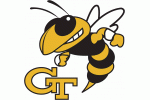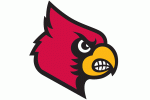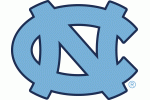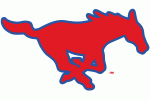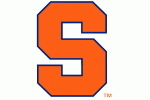St. John's annihilated Syracuse's 2-3 zone by utilizing a 1-4 high set on Sunday. The Johnnies shot 50 percent from beyond the arc.
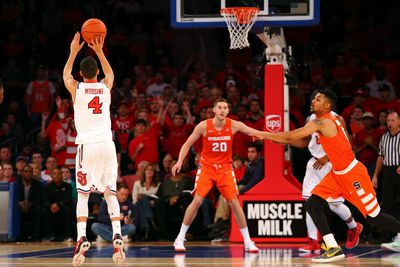 When people utter the words "2-3 zone," what's the first thing that comes to mind? Most people would probably say Syracuse Orange or Jim Boeheim. Boeheim has made the 2-3 zone famous not because he was the originator of the defense, but because he has taught it so well and because he plays it 40 minutes per game. No other coach does that.
When people utter the words "2-3 zone," what's the first thing that comes to mind? Most people would probably say Syracuse Orange or Jim Boeheim. Boeheim has made the 2-3 zone famous not because he was the originator of the defense, but because he has taught it so well and because he plays it 40 minutes per game. No other coach does that.
If it's been said once, it's been said a million times. "You can't simulate the length of Syracuse's 2-3 zone in practice," or "They've played against 2-3 zone this year, but none like Syracuse's." It's something that drives Syracuse fans nuts every time the same phrases are reiterated time and again.
On Sunday the only thing that happened time and again was St. John's running an efficient offense and getting open shots against Syracuse's illustrious 2-3 zone. No, Syracuse might not be as good defensively as it has been in year's past, but Chris Mullin prepared his team well for this game by getting his team to run a 1-4 high set with a double high post. Let's dive right in.
/cdn0.vox-cdn.com/uploads/chorus_asset/file/4954515/1.0.png)
St. John's is in the 1-4 set here; it's a little staggered but for all intents and purposed this is a 1-4. The idea is to get the ball into one of the players in the high post and force the wings of the 2-3 zone into a tough decision.
/cdn0.vox-cdn.com/uploads/chorus_asset/file/4955097/2.0.png)
Once the ball is entered into the high post, the high post player who does not receive the ball flashes right to the rim. In this case, Kassoum Yakwe flashes to the rim which in theory would make Tyler Lydon rotate with Yakwe. Since Coleman has to defend the high post, Yakwe would be unguarded. This presents the opportunity for the Durand Johnson to have an open three. St. Johns was able to execute this on multiple occasions, getting wide open looks.
/cdn0.vox-cdn.com/uploads/chorus_asset/file/4955757/3.0.png)
Lydon rotates with Yakwe which means Michael Gbinije has to rotate to the wing to defend Johnson. By the time he does this, Federico Mussini is open at the top of the key. Johnson is also running in for an offense rebound. One can see why rebounding out of the 2-3 is difficult, especially in this scenario. Nonetheless, Mussini knocked down the triple leaving no chance for an offensive rebound. This type of offense puts a great deal of pressure on the wings and the top of the 2-3 zone.
Let's take another look:
/cdn0.vox-cdn.com/uploads/chorus_asset/file/4957591/4.0.png)
In this instance the ball enters the high post from the wing.
/cdn0.vox-cdn.com/uploads/chorus_asset/file/4959025/5.0.png)
Once the ball enters the high post, St. John's immediately looks opposite. The Johnnies have four options on this possession as not one Syracuse player is actually guarding a St. John's player. DaJuan Coleman is backing off from defending the high post, (which is what Syracuse wanted to do) the wing is open, the high post player flashing is open and Mussini is, once again, open.
/cdn0.vox-cdn.com/uploads/chorus_asset/file/4959607/6.0.png)
Look at the separation between Trevor Cooney and Mussini. He's not within six feet of him. Granted, this is a deep three but the result was the same. St. John's was able to knock down another wide open look from downtown.
***
This is the same set that John Beilein -- who was just voted best offensive coach in 2015 -- runs against a 2-3 zone. Beilein ran it against Syracuse in the 2013 Final Four and again in the 2014 Big 10/ACC Challenge. This dates back to his coaching days at West Virginia. This isn't only one way to beat a 2-3 zone but as seen yesterday, this can be highly effective if coaches have the right personnel.







